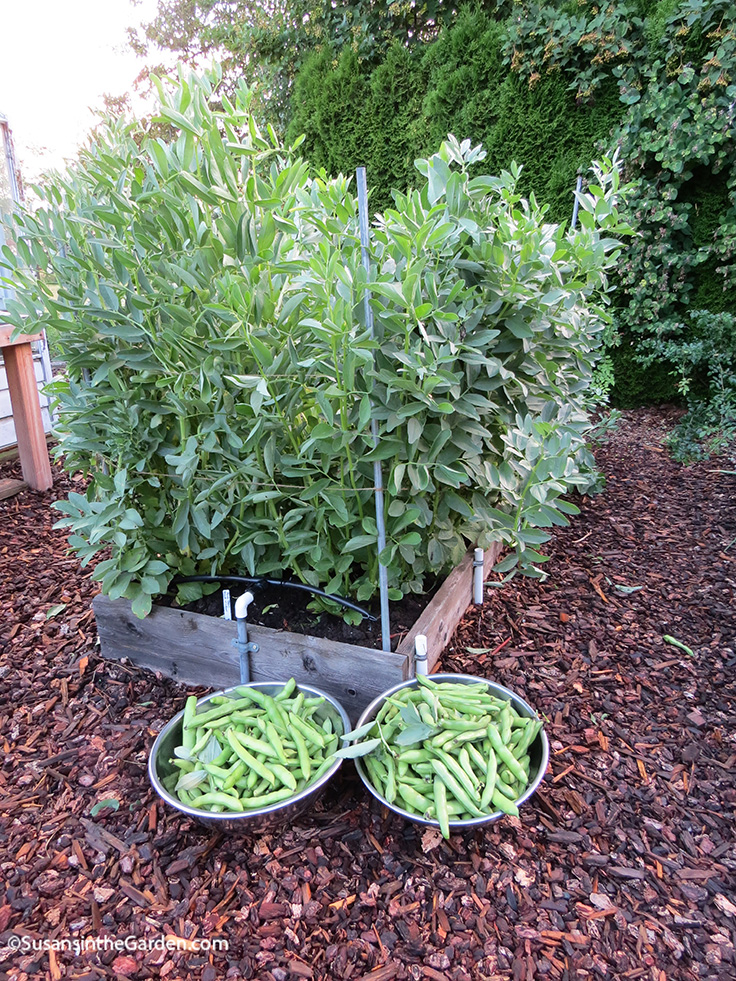Grow Fava Beans

When you grow Fava beans, you’ll find the bit of extra processing work is worth it. I’m not sure how many U.S. gardeners grow them but they make a great addition to the garden.
Latin Name: Vicia faba
Plant Family: Fabaceae
Cool-season crop
Did You Know?
While most types of beans are warm-season crops, Fava beans grow best in cooler conditions. They will even tolerate light frosts. The plants are absolutely gorgeous with their broad leaves and unusual black-and-white flowers. They produce a prolific crop of attractive pods that conceal a tasty prize inside! Fava beans can be grown as shelling beans or harvested later as dried beans.
Plant Seeds or Seedlings? Sow seeds directly in the garden.
When: Plant in early spring as soon as the soil can be worked. In milder climates where the ground doesn’t freeze, plant Favas in September to harvest the following spring.
Days to Germination: 10 to 14 days
Depth to Sow: 1 inch
Spacing: Plant seeds 6 inches apart and space rows 18 inches apart.
Days to Maturity: 75 to 80
Cultural Information:
Prepare seed bed. Since the plants will be quite tall and full, plant seeds at recommended spacing above. Water bed regularly and stay on top of weeds so they won’t compete with the plants for soil and nutrients. Since legumes fix nitrogen in the soil, rotate nitrogen-loving crops — such as corn, lettuce and cabbage — into the bed next.
Susan’s Picks: ‘Broad Windsor’, ‘Robin Hood’, ‘Vroma’
When to Harvest:
If you want to grow Fava beans as shelling beans, pick the pods when they are full and plump. If dried beans are desired, harvest pods when they are dry and brittle. Do not allow them to get wet prior to harvesting.
How to Cook & Preserve:
The unusual thing about Fava beans is that it’s the inner section of the shelled beans that you are after. Remove beans from pods and blanch them by placing them in a kettle of boiling water for 2 minutes. Put them in ice-cold water until they are cool; drain. You’ll notice the outer shells of the beans have loosened. Squeeze each one to release the inner bean. At this point, you can eat or freeze them. Yes, this is a bit of work but definitely worth it! One of our favorite ways to use them is a in fava bean dip, which makes a delicious spread for toasted artisanal bread. We also enjoy adding them to gnocchi dishes.
Are you growing Favas to store the dried beans for later use? Place the dry, brittle pods indoors for two weeks after harvesting to finish the drying process. At that point, remove seeds from the pods and make sure they are fully dry. If they’re not, wait a bit longer. Store seeds inside a jar in a cool, dark location.
My Videos About Growing Fava Beans:
Back to Vegetable Grow Guide Chart
Copyright: Susan Mulvihill, Susan’s in the Garden, SusansintheGarden.com.

